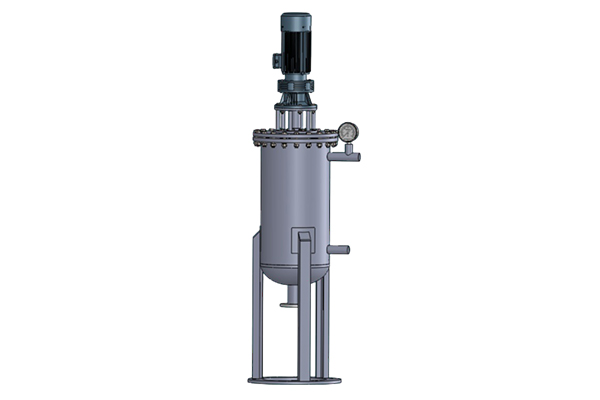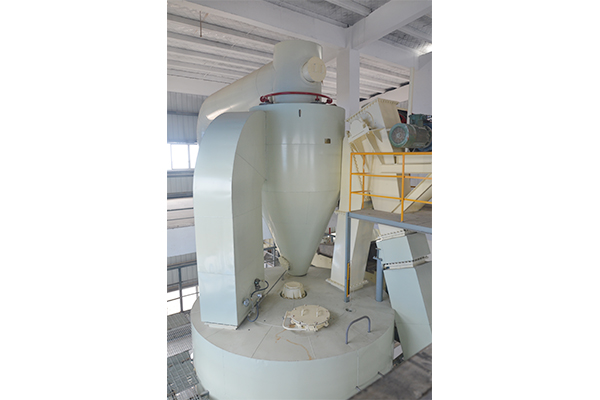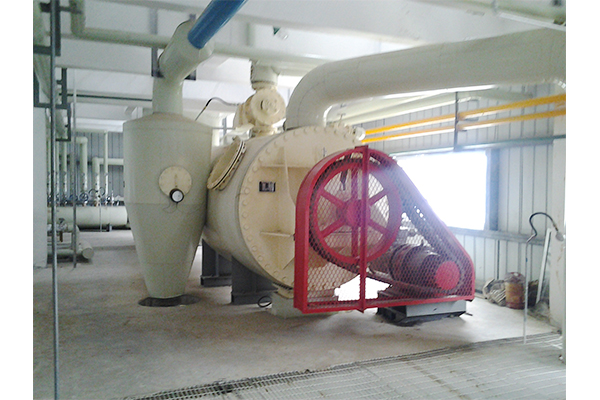How does the flap cooler ensure uniform discharge?
Release Time : 2025-03-04
The flap cooler ensures uniform discharge through the following design and working principle:
1. Design features
Swinging flap discharge mechanism: The flap cooler adopts a swinging flap discharge mechanism controlled by a flexible hydraulic transmission system. This design enables the flap to flip at a predetermined rhythm and angle, thereby achieving uniform discharge.
The discharge speed is adjustable. By adjusting the parameters of the hydraulic system, the flipping speed and angle of the flap can be accurately controlled to adapt to different materials and cooling requirements.
Distribution device: Some flap coolers are equipped with a rotating distribution device, which ensures that the material can be evenly distributed when entering the cooler. Evenly distributed materials are conducive to the uniform penetration of cooling air and improve the cooling effect.
The design of the distribution device enables the material to form a stable material layer in the cooler, which is conducive to the flap to maintain uniformity when discharging.
2. Working principle
Material accumulation and signal triggering: Hot materials gradually accumulate after entering the silo through the air shut-off device. When the material accumulates to a certain height and contacts the upper level device, the solenoid valve of the hydraulic system will receive a signal.
After receiving the signal, the solenoid valve controls the piston rod of the hydraulic cylinder to extend, and drives the flap to rotate a certain angle through a certain number of connecting rods, so that the material on the flap falls down for unloading.
Unloading and material level control: When the discharge amount is greater than the feed amount and the material in the silo drops to the lower level device, the solenoid valve receives a signal again, controls the piston rod of the hydraulic cylinder to retract, and returns the flap to the horizontal position to stop unloading.
In normal operation, the feed and discharge of the cooler should be kept basically equal, that is, the material should be basically kept at a certain height to ensure that the material has enough cooling time. The unloading speed and cooling time are adjusted by adjusting the flip angle of the flap.
Reverse movement of cooling air and material: The cooling air flows from bottom to top, forming a reverse movement with the material. This reverse movement is conducive to the gradual cooling of the material during the cooling process, avoiding problems such as cracking of the particle surface caused by sudden cooling.
As the flap reciprocates to discharge, the material gradually and slowly descends, and the cooling air changes from cold to hot from bottom to top. In this way, during the working process, the hot material at the top encounters hot air, and the cold material at the bottom encounters cold air. The material is evenly cooled during the downward process and becomes hard and strong.
The flap cooler ensures uniform discharge through a swing-type flap discharge mechanism, a material distribution device, and a precise working principle. These designs and working principles enable the flap cooler to work efficiently and stably in the oil, feed and other industries, meeting the cooling needs of various pellet feeds.
1. Design features
Swinging flap discharge mechanism: The flap cooler adopts a swinging flap discharge mechanism controlled by a flexible hydraulic transmission system. This design enables the flap to flip at a predetermined rhythm and angle, thereby achieving uniform discharge.
The discharge speed is adjustable. By adjusting the parameters of the hydraulic system, the flipping speed and angle of the flap can be accurately controlled to adapt to different materials and cooling requirements.
Distribution device: Some flap coolers are equipped with a rotating distribution device, which ensures that the material can be evenly distributed when entering the cooler. Evenly distributed materials are conducive to the uniform penetration of cooling air and improve the cooling effect.
The design of the distribution device enables the material to form a stable material layer in the cooler, which is conducive to the flap to maintain uniformity when discharging.
2. Working principle
Material accumulation and signal triggering: Hot materials gradually accumulate after entering the silo through the air shut-off device. When the material accumulates to a certain height and contacts the upper level device, the solenoid valve of the hydraulic system will receive a signal.
After receiving the signal, the solenoid valve controls the piston rod of the hydraulic cylinder to extend, and drives the flap to rotate a certain angle through a certain number of connecting rods, so that the material on the flap falls down for unloading.
Unloading and material level control: When the discharge amount is greater than the feed amount and the material in the silo drops to the lower level device, the solenoid valve receives a signal again, controls the piston rod of the hydraulic cylinder to retract, and returns the flap to the horizontal position to stop unloading.
In normal operation, the feed and discharge of the cooler should be kept basically equal, that is, the material should be basically kept at a certain height to ensure that the material has enough cooling time. The unloading speed and cooling time are adjusted by adjusting the flip angle of the flap.
Reverse movement of cooling air and material: The cooling air flows from bottom to top, forming a reverse movement with the material. This reverse movement is conducive to the gradual cooling of the material during the cooling process, avoiding problems such as cracking of the particle surface caused by sudden cooling.
As the flap reciprocates to discharge, the material gradually and slowly descends, and the cooling air changes from cold to hot from bottom to top. In this way, during the working process, the hot material at the top encounters hot air, and the cold material at the bottom encounters cold air. The material is evenly cooled during the downward process and becomes hard and strong.
The flap cooler ensures uniform discharge through a swing-type flap discharge mechanism, a material distribution device, and a precise working principle. These designs and working principles enable the flap cooler to work efficiently and stably in the oil, feed and other industries, meeting the cooling needs of various pellet feeds.








